Audi has been designing icons for 60 years. Here are some of the best
From the first Quattro, to the TT and the R8, Audi has always been able to turn a head. Adam Hay-Nicholls, our man in Rioja, explains why.
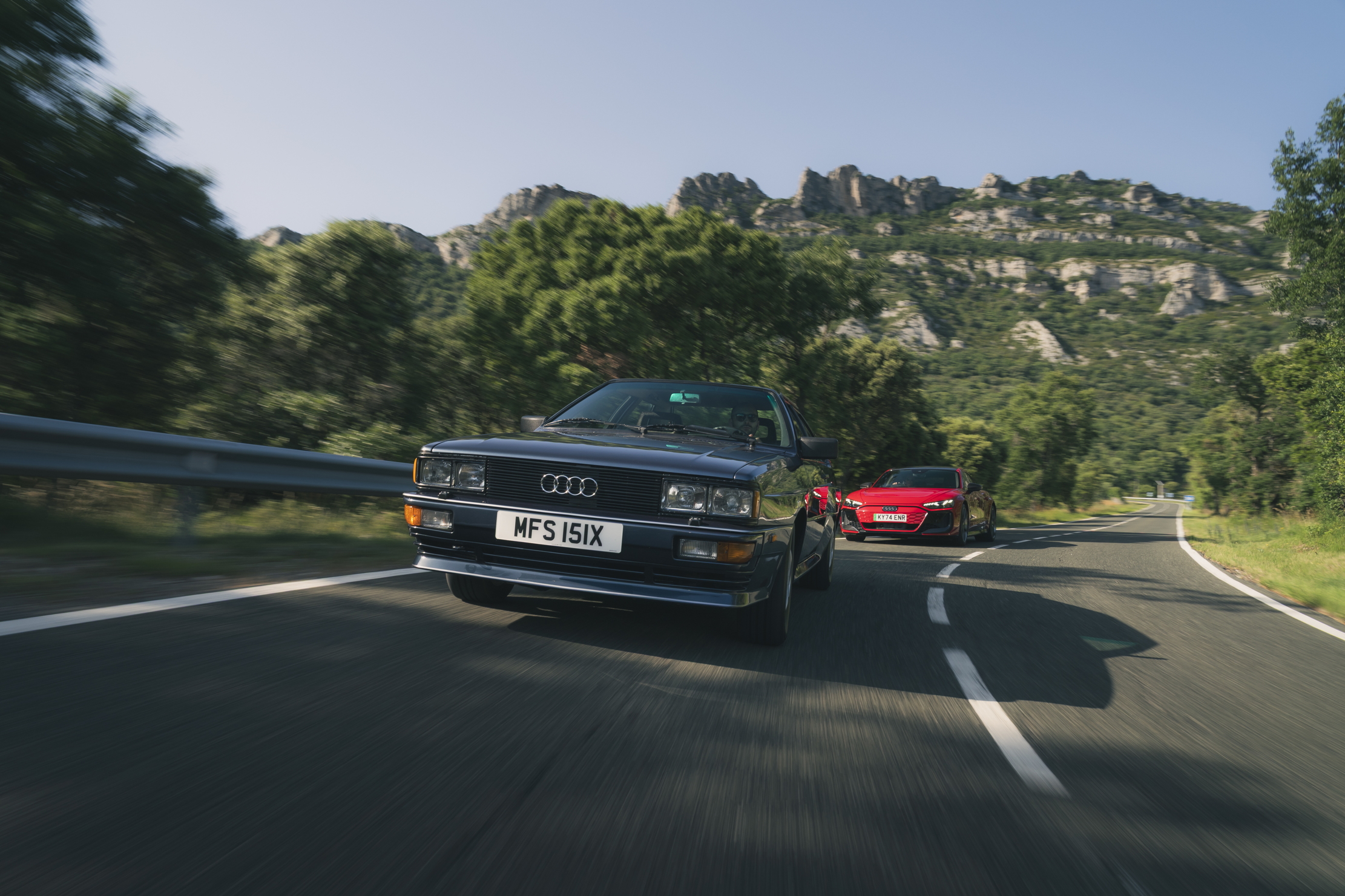

You find me in Rioja, the Spanish wine region south of Bilbao, in an eye-catching hotel. Frank Gehry’s Hotel Marqués de Riscal, with its curling and sweeping avant-garde canopies of pink, silver and gold, rises from the Ebro valley vineyards in the shadow of the Cantabrian Mountains. Parked below it, ripening in the mid-day sun, are nine Audis of various vintages that exhibit equally bold design.
This year marks 60 years since Audi joined the Volkswagen family and produced its first VW-backed car, the F103 — later known as the Audi 80. The Audi 100 (C1) followed three years later, in 1968, which put the company on the map as a style leader and a technological rival to BMW and Mercedes-Benz. The seeds of Audi’s sculpted minimalism and yuppie image can be traced all the way back to then, and achieved lift-off with the 1980’s rally-bred Quattro coupe, which was a technological tour-de-force and, as exemplified by its starring role in Life on Mars, symbolised an era.

The Audi 100 GL saloon.
The UK has played an outsized role in the German brand’s story. Audi arrived on our shores in 1965, with UK buyers among the first to get their hands on the original 80. The famous slogan ‘Vorsprung durch Technik’ (‘Progress through Technology’) was conceived by employee Hans Bauer in 1971, who wanted to communicate Audi’s technical diversity, but it wasn’t until a London advertising agency saw it that it was used outside of the company. John Hegarty of BBH, which was employed by Audi UK, loved the hard-edged precision of the words: futuristic and reassuring all at once. They used these three words throughout the 1980s and 90s to catapult Audi into the premium segment. Repeated over 100 million times on TV, on billboards and in newspapers and magazines, its cultural meaning was further cemented via Only Fools and Horses and Blur’s Parklife (‘It’s got nothing to do with your Vorsprung durch Technik, you know’).
Audi have brought these nine mint machines from their UK-based heritage fleet, where they’re meticulously maintained, but not preserved in aspic. Instead, they’re let out on special occasions, such as this one, to be enjoyed. The silky-smooth 100 GL must have felt like a spaceship in the late 1960s, and its minimalist interior with light open-pore wood is back on trend. The Quattro, on the other hand, wants to be grabbed by the scruff of the neck and thrashed. Lightweight, finely balanced, and no safeguards: They don’t make real world cars like this anymore. In the tape deck I find a Let’s Dance David Bowie cassette. Between that and the brown carpet on the doors, it’s like being back in my childhood bedroom.
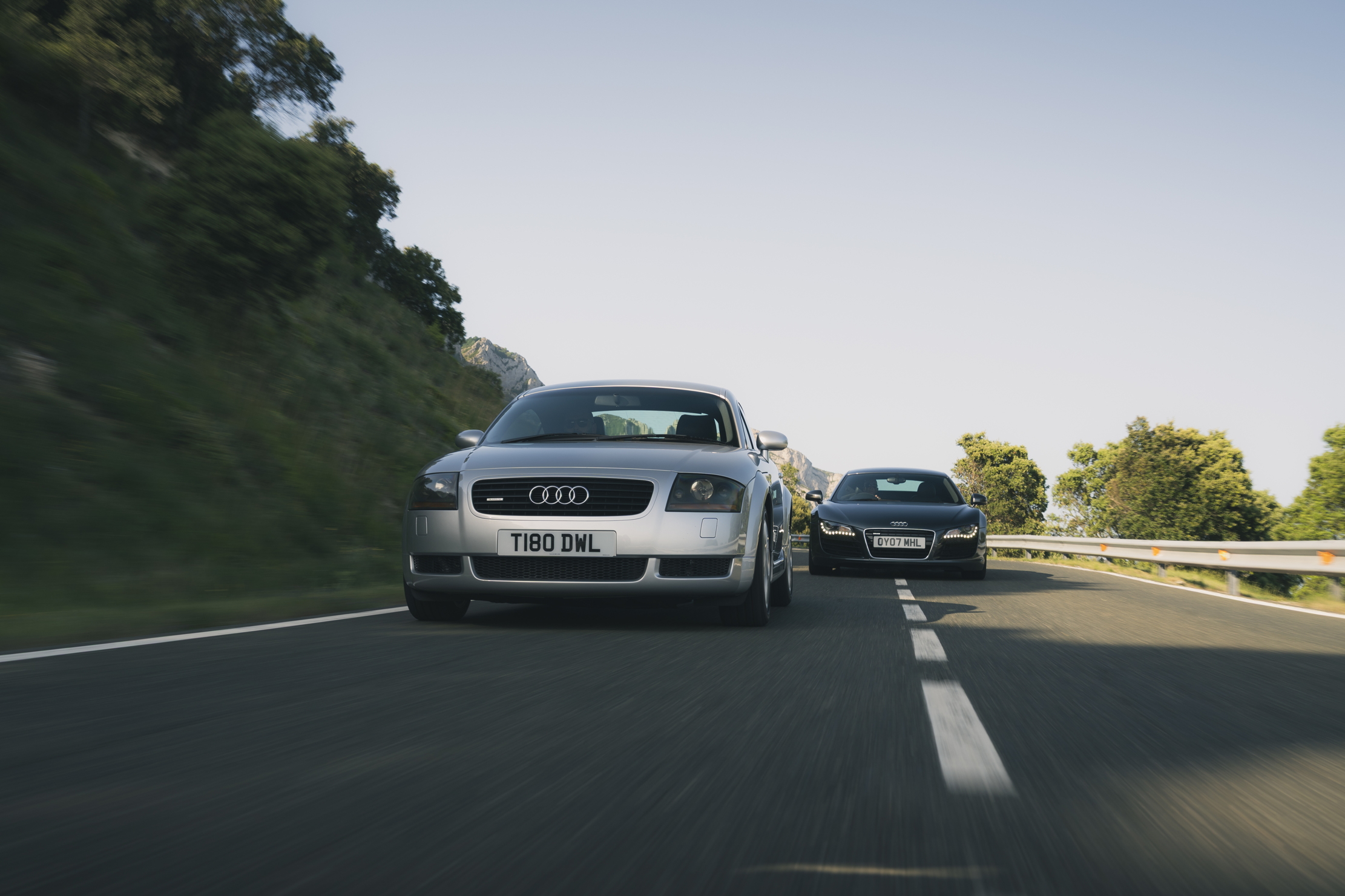
The TT (left) and R8, two of Audi's most influential modern designs.
There are other cars charting Audi’s progress from the 1990s and 2000s, including the original TT, sadly in convalescence due to the Spanish heat. The TT, which was first shown as a concept in 1995 and went into production three years later, was an even bigger design milestone than the Quattro. Based on the VW Golf, it resurrected Bauhaus and was among the most influential of car designs. It still inspires designers to this day. It thrust Audi into a grainy black and white Anton Corbijn-shot world. Its estates, or Avants as they’re known — the RS 2 (which was a Porsche-engineered load-lugger born eight years before the Cayenne), RS 4 and RS 6 — became a byword for extreme stealth, without sacrificing practicality. Wolves in sheep’s clothing — or, at least, quietly menacing. From Ronin to The Transporter, Layer Cake to Mobland, Audi has become the de-facto getaway car, replacing the Jags and fast Fords of yore in the minds of modern audiences.
Launched in 2006, the R8 was the ultimate halo car; a 414bhp mid-engined supercar that could be driven every day and at £80,000 was half the price of a not dissimilar Lamborghini. It took the TT’s geometric design and wrapped it around a stick of dynamite.

Today’s halo car is the e-tron GT, an all-electric coupe-like four-door based on the Porsche Taycan, but uniquely tuned to deliver that sturdy feel and mile-munching Audi ride. Freed from combustion packaging, it’s surely the boldest-looking production quattroporte on the planet, and in £144,000 RS guise delivers 912bhp and 0-62mph in 2.5 seconds. Having been persuaded by The Princess of Wales to ditch the superbikes, I’m told the e-tron GT RS is how the heir to the throne gets his kicks nowadays.
Exquisite houses, the beauty of Nature, and how to get the most from your life, straight to your inbox.
Which brings us to one of Audi’s latest high-end electric chariots, the A6 Sportback e-tron. It cuts through the air like a hot knife through espuma in order to achieve its official 463-mile electric range, and it’s predictably nimble. But it’s also completely forgettable both in the way it drives and the way it looks. When I close my eyes and try to remember what it looks like all I see is a grey fuzzy outline that looks a bit like a BMW at the front and something Korean at the back. At this closest point along a 60 year journey, it’s a bit depressing. With the exception of the halo cars, for the past decade Audi design has morphed into the same immemorable blob as everything else. Its identity, so clearly defined in the TT, has all but evaporated. I felt particularly sorry for the designer who was showing us around the A6 just as an almost priceless 1950s Mercedes 300 SL Gullwing made a wrong turn and swept into our car park. Imagine auditioning for Britain’s Got Talent and The Beatles show up.

The RS4, a byword for extreme stealth and performance.
But there are reasons to be cheerful, because Audi is showing signs of rediscovering its mojo. Maybe this look back through the archives has relit a fire. On returning from Spain, Audi published images of its Concept C – and it is the Audi of your Kraftwerk-scored dreams. It builds on both the TT and R8; neat, unfussy Teutonic design with a shrunken rectangular grille like that of an Auto Union grand prix car (Auto Union and Audi were one and the same, before the VW buy-out six decades ago). Led by new Audi design boss Massimo Frascella, it displays design elements that could soon find themselves across a new range of cars. But first, and most excitingly, it is a direct preview of a new sports car — a new TT, whatever it’s christened — which will use the same electric platform as the forthcoming Porsche Boxter and Cayman and will go on sale in 2027.
The four LED lights across its face even have a hint of Bugatti Chiron about them (a £2.5m uncle). Audi is synonymous with the number four, of course: Four rings, four-wheel-drive, 4cm off your rear bumper. Classic Audi, but in an entirely futuristic way. Progress indeed.
Adam Hay-Nicholls is an award-winning journalist. He regularly writes for The Sunday Times Magazine, GQ, Air Mail, Metro, City AM, The Spectator and Wallpaper.
-
 Haute dogs: How fashion’s finest would dress 11 dogs and one very spoilt cat if only they had the chance
Haute dogs: How fashion’s finest would dress 11 dogs and one very spoilt cat if only they had the chanceWe’ve matched some much-loved breeds to the designers that share their history, temperament and vibe — because why not. Illustrations by Tug Rice.
-
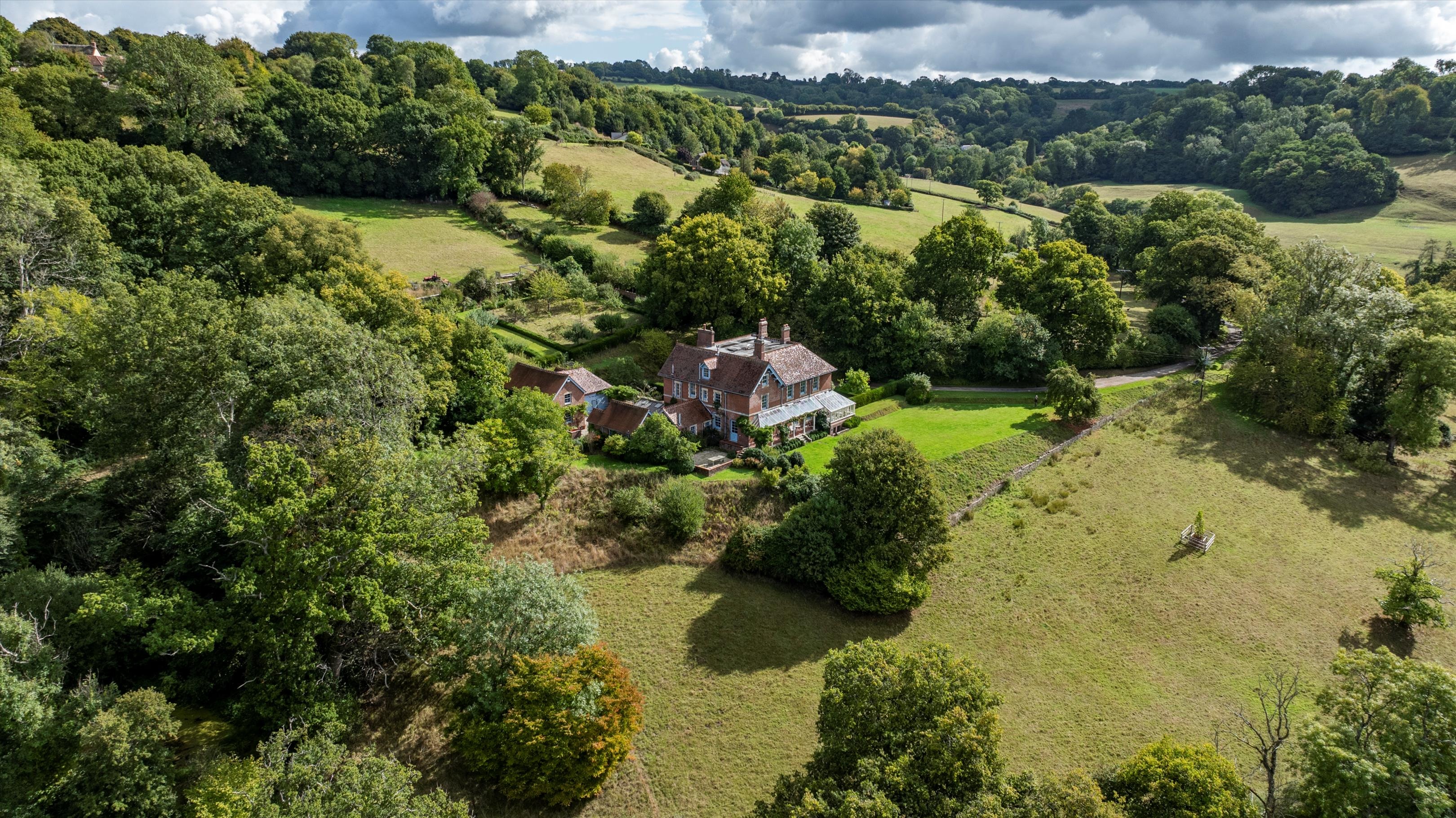 Utterly wonderful country homes for sale across Britain, from a 10-bedroom mansion to a Devon hideaway, as seen in Country Life
Utterly wonderful country homes for sale across Britain, from a 10-bedroom mansion to a Devon hideaway, as seen in Country LifeFrom an irresistibly charming house in Devon to a 400-year-old commutable home in Hertfordshire, here's our pick of some of the best homes to come to market via Country Life in the past week.
-
 Haute dogs: How fashion’s finest would dress 11 dogs and one very spoilt cat if only they had the chance
Haute dogs: How fashion’s finest would dress 11 dogs and one very spoilt cat if only they had the chanceWe’ve matched some much-loved breeds to the designers that share their history, temperament and vibe — because why not. Illustrations by Tug Rice.
-
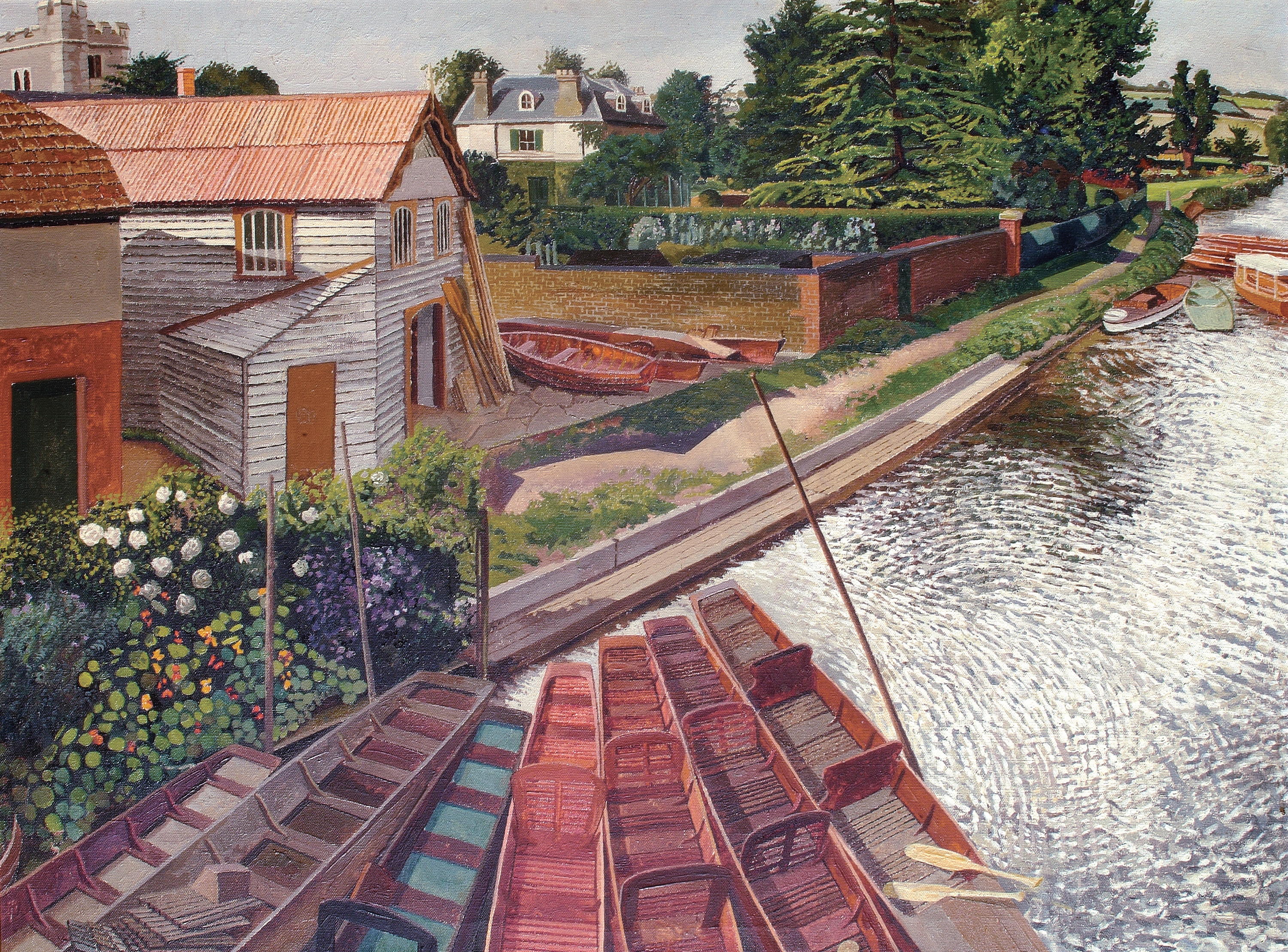 'Love, desire, faith, passion, intimacy, God, spiritual consciousness, curiosity and adventure': The world of Stanley Spencer, a very English visionary
'Love, desire, faith, passion, intimacy, God, spiritual consciousness, curiosity and adventure': The world of Stanley Spencer, a very English visionaryStanley Spencer’s talent for seeing the spiritual in the everyday, his stirring sense for the wonder of Nature and his love for the landscapes of Berkshire and Suffolk shaped his art, as Matthew Dennison reveals.
-
 The tourbillon watch is a masterpiece of order born out of tumult and disarray
The tourbillon watch is a masterpiece of order born out of tumult and disarrayWhat is it that makes the tourbillon — one the most beguiling instruments in watchmaking — tick?
-
 What a report on the spending of female billionaires tells us about the future of museum collections
What a report on the spending of female billionaires tells us about the future of museum collectionsBetween 2015 and 2024, the number of female billionaires grew from 190 to 344. Could this be good news for the art world?
-
 Madonna, David Bowie, Elizabeth II and me — this is what it’s like to have your photograph taken by Rankin
Madonna, David Bowie, Elizabeth II and me — this is what it’s like to have your photograph taken by RankinThe world-renowned photographer has worked with everyone from acting royalty, to actual royalty. His next subject? Country Life’s wandering scribe, Lotte Brundle.
-
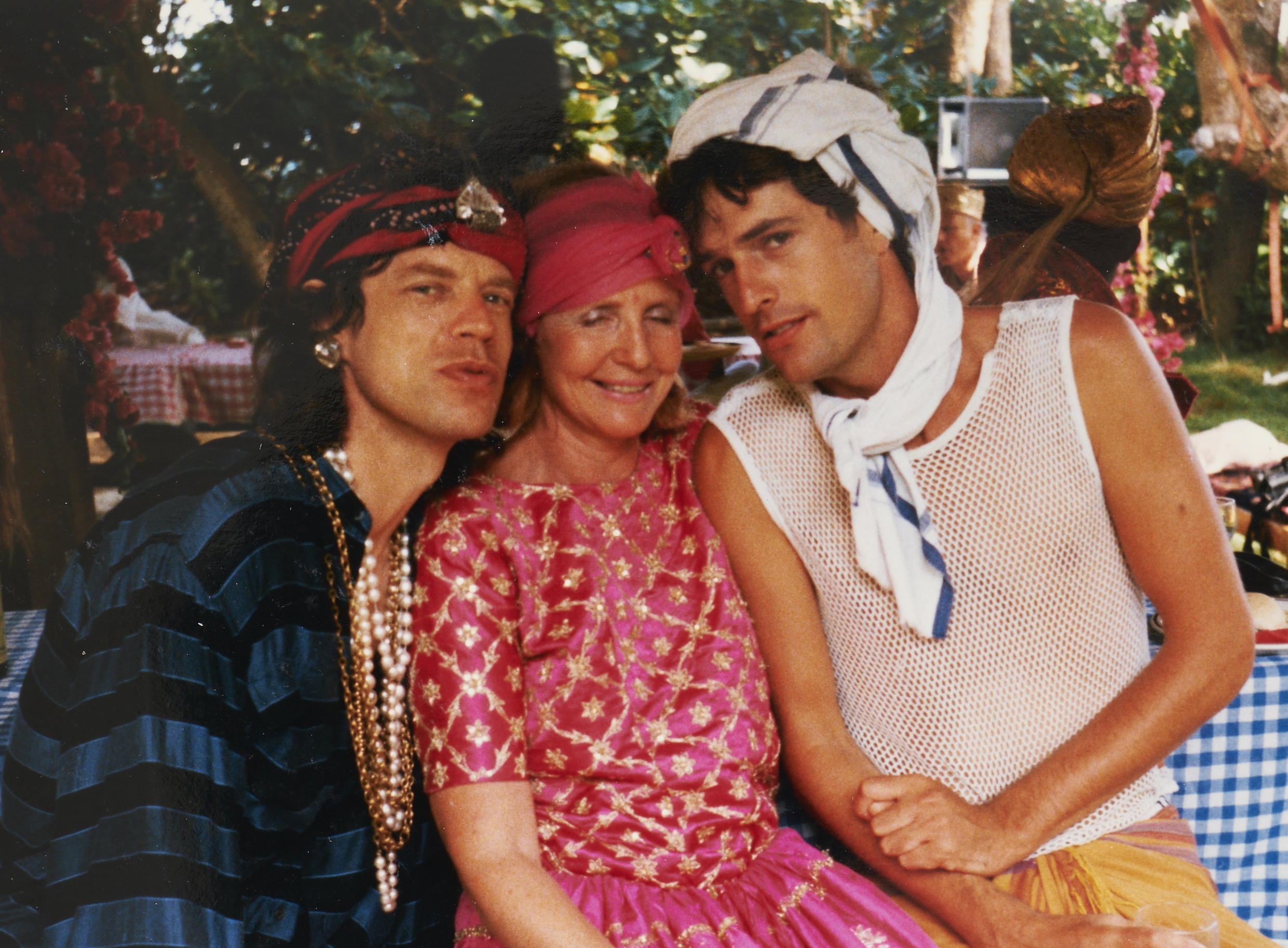 Items from the collection of Lady Glenconner are going under the hammer, including a nine-carat gold Cartier box gifted to her by Elizabeth II
Items from the collection of Lady Glenconner are going under the hammer, including a nine-carat gold Cartier box gifted to her by Elizabeth II‘I have had such great pleasure living with these wonderful objects, each telling their own fascinating story.’
-
 What do women want (on wheels)?
What do women want (on wheels)?James Fisher gets to drive fast cars for a living, but are sleek lines and high horsepower quite the 'babe magnets' so many men think they are? On a quest to find the truth, he dared do the unthinkable.... which was to just ask them.
-
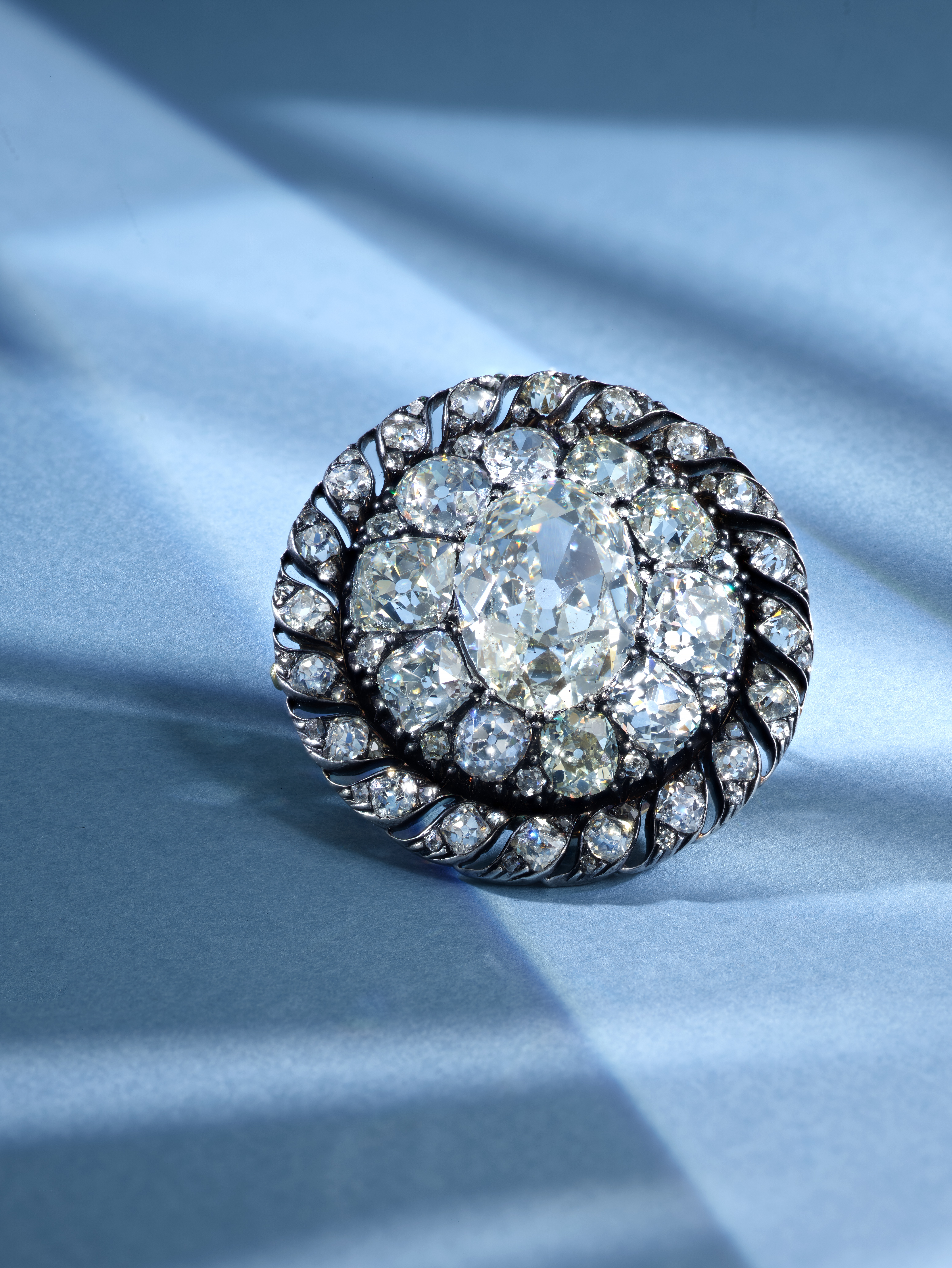 Cheaper to steal than to buy: Napoleon's brooch sells for £4.4 million – 17 times its estimate
Cheaper to steal than to buy: Napoleon's brooch sells for £4.4 million – 17 times its estimateNapoleon's one-of-a-kind brooch went under the hammer and vastly outstripped its pre-sale estimate.
